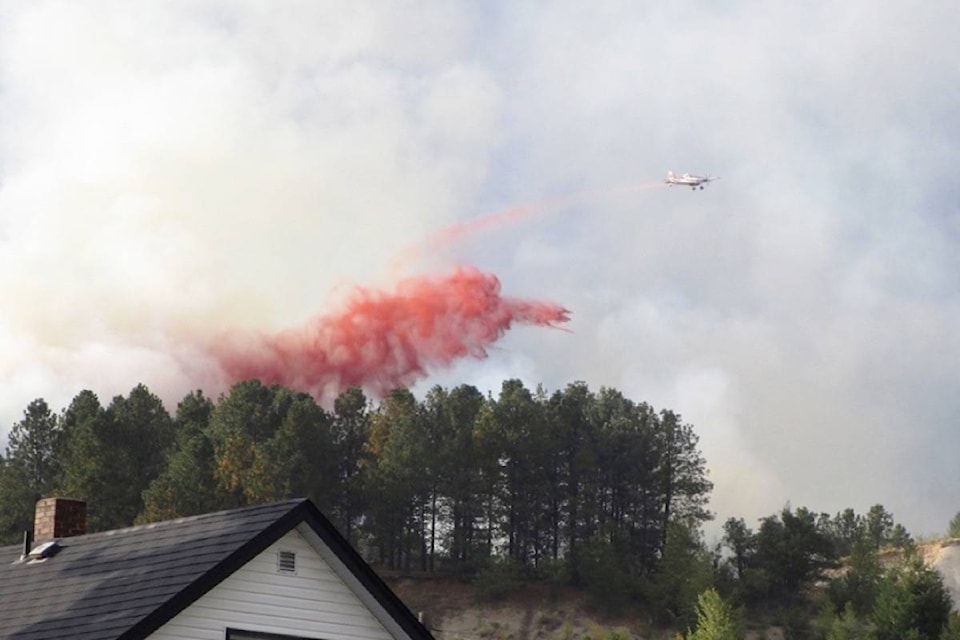While there was a marked increase in calls to public assists, hazmat scenes, and vehicle fires last year, the overall call volume at the regional fire department actually dropped more than 15 per cent.
However, it’s important to clarify that the decrease of 316 calls is mostly related to first responder dispatches, and a direct result of a change in protocol by BC ambulance.
Those revised procedures dropped the number of assists from the Regional District of Kootenay Boundary (RDKB) fire rescue to 836 first responder calls, compared to 1,094 of those same type of incidents the year previous.
Read more: RDKB emergency calls climb in 2017
“The big change over 2018 was the decrease in call volume related to the changes in emergency medical services dispatch protocol implemented by BCEHS (British Columbia Emergency Health Services Commission) in the spring of 2018,” Fire Chief Dan Derby explained. “Resulting in a 24 per cent decrease in first responder calls.”
In all, the fire department call volume totalled 1,548 compared to 1,864 in 2017.
Besides 258 less first responder calls, another incident type that notably dropped was attendance at motor vehicle incidents (MVI). The regional crew assisted with 143 MVI calls in 2018, compared to 203 the year previous.
Another overall decrease was related to structure/wildfire incidents, with those 9-1-1’s collectively dropping from 92 calls in 2017, to 79 last year. Firefighters responded to 44 structure fires and 35 wildland fires in 2018, the most memorable of the latter being an aggressive fire behind the regional hospital that made news across the province on Sept. 11, and temporarily closed the road to patients and staff.
Read more: Wildfire suspected to be human-caused
Read more: Helitankers used to douse Trail wildfire
Of note, is how that wildfire exemplified the effectiveness of coordinated emergency responses between regional emergency services, the city, BC ambulance, police officers and Interior Health. No one was hurt, outlying medical centres stayed open late, no structures were affected, and access to the Trail hospital was re-gained after midnight.
Other than that, the breakdown reveals fairly static call outs for incidents such as alarms and rescues. Further to Derby’s annual statistics report, compared to 2017, his numbers reveal 36 more calls for ‘public assist,’ 12 additional responses to vehicle fires, and an increase of 25 hazmat-related incidents.
As summer months near, Chief Derby says the department’s focus is on wildfire season preparation. Ten members attended wildfire training with BC Wildfire Service earlier this month, with an additional 20 attending training on structure protection and wildland firefighter training.
Earlier this month, East End Directors began looking at a long-term strategic plan for the service.
“It is only a recommendation for now,” explained RDKB Director, Trail Coun. Robert Cacchioni. “The final RFP (Request for Proposal) (for consultation services) will be discussed in May and refined as to what the committee wants covered,” he said. “The report will identify all options as to where the fire service will be in a number of years, the discussion is an ongoing process, and public consultation is a major focus as it should be.”
Over the past few years there have been a number of changes effecting the provision of fire services in British Columbia along with more local regional impacts.
Those included re-routing delivery of fire dispatch from the RDKB to the City of Kelowna, updated WorkSafeBC legislation, adoption of the provincial standards ‘Playbook,’ and pending changes to the Fire Safety Act.
“It has been recognized by the East End Services committee that there are a number of challenges to resolve to ensure that the long term delivery of the (fire) service is sustainable and provides best value to all member communities,” reported James Chandler, RDKB general operations manager.
“Additionally, in recent years, a number of studies and assessments have been completed. These studies may provide further background information, however, they may also lack specific analysis and investigation that could be considered as part of a longer term, master planning process.”
newsroom@trailtimes.ca
Like us on Facebook and follow us on Twitter
